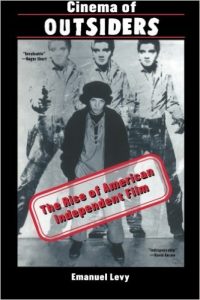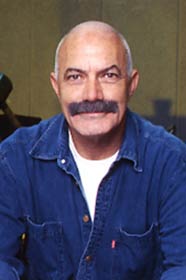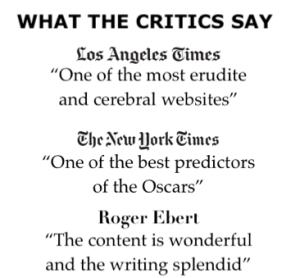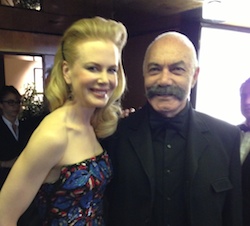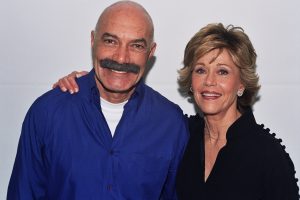The Sundance Film Fest celebrated its 40th edition, we offer a look back at some crucial movies, turning points, and key moments in the history of the most significant and crucial film fest n the U.S.
My Book about Independent Cinema



Sundance 2020
“Farting Corpse Movie” prompts headlines and walk-outs
Swiss Army Man’s opening sequence has Paul Dano riding Daniel Radcliffe, playing the corpse as a human jet-ski powered by his own flatulence. It was one of the most anticipated films of the 2016 festival, but during its premiere at the Eccles, it garnered headlines for “mass walkouts” (the number was in the couple dozens for a 1,500 seat theater). “We were wondering if there was going to be a bidding war that night, and that very much did not happen,” co-director Daniel Scheinert later said.
Fellow director Dan Kwan adding, “I was not sleeping well, kind of in a funk, being like: ‘What do we do? How do we get out of this situation?’” The movie was eventually acquired by A24, and the Daniels would go on to win best director and best picture at the 2023 Oscars for their film Everything Everywhere All At Once.
.
Sundance 2020
Palm Springs sells in a massive deal (2020)
Even when spending millions for potential acquisitions, it’s still important to have fun. In a late-night deal, it was announced that the Andy Samberg comedy Palm Springs sold for the specific price of $17,500,000 million and — ahem— 69 cents. (Later reports pegged the deal closer to $22 million.) The movie hailed from SNL alums turned producers The Lonely Island (aka the guys that brought you SNL video shorts “Dick in a Box” and “I Just Had Sex”), so it wasn’t unexpected behavior. “We had been up all night, and it was 5 or 6 in the morning when we [suggested] that. Our brains were fried,” Samberg later told THR.
While COVID-19 lockdown wouldn’t come until two months later, the 2020 Sundance resulted in harsh flu-like symptoms for several attendees. While catching “the Sundance flu” has been a time-honored tradition, 2020 festival attendees reported having caught something far worse, COVID 19.
The first documented U.S. case of COVID-19 was confirmed January 21, 2020 in Washington state.
Sundance 2021
CODA sets a new record (2021)
During the 2021 festival, the first to take place remotely in the pandemic, CODA’s family drama sold for a massive $25 million, still the biggest sale of the festival to date. The investment turned out to be a good one for Apple: The movie won the best picture at the 2022 Oscars.
Sundance 2022
The COVID-19 cancellation (2022)
After a 2020 festival that eked through right before the pandemic (or maybe not? See: No. 4), and a 2021 fest that was held online, Hollywood was looking forward to getting back to Park City. But a surge in COVID cases due to the Omicron variant led to the decision to cancel the 2022 in-person festival, less than two weeks before the opening of the fest. Many non-refundable condo and hotel fees were lost that day.
When Robert Redford took over Sundance in 1984, it was a sleepy little get-together of movie buffs called the U.S. Film Festival. Nobody in Hollywood had heard of the thing, let alone flew their private jets to it. Of course, 30 years later, independent filmmakers consider Park City the single most important piece of real estate east of Silver Lake, at least for 10 days every January.
Sundance 1989
Sex, lies, and videotape sells for $1 million (1989)
The mother of all indies, Steven Soderbergh‘s low-budget ($1.2 million) yarn about a bunch of restless Baton Rouge yuppies — played by then-unknowns Peter Gallagher, James Spader, Andie MacDowell and Laura San Giacomo — lost the Grand Prize to Nancy Savoca‘s True Love (bet you can’t remember that cast). But it became independent film’s first real crossover hit. After its million-dollar purchase at Sundance (by some guy named Harvey), it went on to gross $25 million and put Redford’s festival (and the Weinsteins) squarely on the map.
Sundance 1992
Rodriguez’s $7,000 El Mariachi debuts (1992)
It cost less to make Robert Rodriguez‘s groundbreaking Spanish-language gunslinger tale than Schwarzenegger probably spent that year for moisturizer on the Terminator 2 set. The movie’s critical and box-office success (it ended up grossing $2 million) proved that you didn’t need a Hollywood-sized production budget to make a stylish action thriller. It inspired countless other wannabe independent directors and ushered in a decade of micro-financed filmmaking (i.e., maxing out your credit cards to pay for your film stock)
Sundace 1992
3.Reservoir Dogs launches Tarantino (1992)
The premiere didn’t get off to a great start. “I was sitting next to Quentin,” recalls Lawrence Bender, Tarantino’s longtime producing partner, “and I was really nervous because the gate on the projector was wrong. The movie was screening not just on the screen but on the walls around the side. I said to Quentin, ‘This is terrible.’ He said, ‘Relax, it’s OK.’ He was trying to make me feel better. But I was literally sweating. And then, the film broke. The power went out. Everything just went black.” They got the picture up again, of course, and the rest is film history. Tarantino’s reboot of the gangster genre-flick wasn’t just a Sundance smash — it rewrote the rule book on what an independent movie could be.
Sundance 1994
Hoop Dreams shoots and scores (1994)
The documentary that made documentaries hot, Steven James‘ nearly three-hour story about high school kids with NBA dreams, grossed an unheard-of $9 million.
Sundance 1996
Harvey Weinstein loses Shine — and his temper (1996)
Some great films unspooled at the festival that January — Welcome to the Dollhouse, Big Night — but the most entertaining spectacle took place at an Italian restaurant called Mercato Mediterraneo. It was there that an upset Weinstein got into a dustup with Fine Line’s Jonathan Weisgal over the distribution rights to Scott Hicks‘ schizophrenia drama, Shine. Weinstein reportedly shoved Taplin into a corner and loudly accused him of swiping the rights out from under him. According to Peter Biskind‘s Down and Dirty Pictures, Harvey’s exact words to Taplin were, “You f—! You f—ed me! You bid me up … you f—er!” The incident has since become an overblown industry legend (Entourage did a parody). But Harvey got the last laugh. Miramax scored international rights, and the film was a huge hit overseas.
Sundance 1994
Four Weddings and a Funeral kills (1994)
It cost only about a quarter of a million dollars to make. It ended up earning a quarter of a billion, which makes Four Weddings and a Funeral one of the most profitable films ever to screen at Sundance.
Sundance 1994
Smith’s Clerks earns an R rating (1994)
There wasn’t an iota of nudity in Smith’s microfinanced (the $27,000 budget came from Smith’s maxed-out-credit card) black-and-white comedy about a bunch of New Jersey slackers working in a convenience store. But the dialogue was so outlandishly and inventively profane, the film ended up getting slapped with an NC-17 rating. For Miramax, which bought the movie after Harvey Weinstein caught its final screening at Sundance, the harsh rating turned out to be a PR bonanza. Writing the opening chapter in Miramax’s guerrilla marketing playbook, Weinstein hired O.J. Simpson lawyer Alan Dershowitz to spearhead a publicity blitz that made the movie a cause celebre well before it hit theaters. The MPAA ultimately reconsidered and changed Clerks’ ratings to R.
2006
Sunshine strikes it rich (2006)
Sales agent/lawyer John Sloss knew he had a hit even before Little Miss Sunshine‘s screening was over. “It was playing huge,” he later recalled. “I knew everyone would want it. Just before the lights came up, I said, ‘I’ve got to get out of here. It’s going to get ugly. [Distributors] are not going to leave me alone until they get it.’ So my assistant and I drove out to a Ruby Tuesday for a few hours. They have the bottomless salad bar. You just don’t get that in New York.” The movie ended up setting a still-unbroken Sundance sales record, going to Fox Searchlight for $10.5 million. It turned out to be a bargain. The film wound up grossing more than $100 million.
1991
Gay films triumph (1991)
“Queer Cinema” — movies by gay directors about gay characters — was always embraced by Sundance. “Not only embraced, you could say it began there,” says veteran indie director Ira Sachs, who is screening his sixth film at the festival this year (Love Is Strange). “I was at the first screening of Todd Haynes‘ Poison in 1991. I was at the first screening of Rose Troche‘s Go Fish at the Holiday Village Cinema in 1994. I wanted to be Rose and I wanted to be Todd. I think that’s how movements happen. You aspire.”
1999
Blair Witch blankets Park City (1999)
Producers of the original found-footage horror movie plastered fake “missing person” posters, with the faces of some of the film’s cast, all over the festival. The stunt certainly helped generate attention. The film sold for $1.1 million to Artisan, then went on to gross $140 million.
Sundance 1995
Kids does all right (1995)
Larry Clark‘s quasi-documentary drama about sexually super-active, morally stunted high schoolers in New York City got slapped with an NC-17 from the MPAA and ignited a firestorm among critics. The New York Times called it a “wake-up call to the modern world.” The Washington Post, on the other hand, called it borderline child pornography. By any other name, the film ended up grossing $20 million.
2005
9 Songs shocks Sundance (2005)
This melancholy Michael Winterbottom romance followed a young London couple over the course of 12 months and nine concerts. It also happened to feature the first unsimulated sexual intercourse ever shown at Sundance. It remains the most sexually explicit non-pornographic film ever released. Winterbottom shocked Sundance again in 2010 with ultraviolent The Killer Inside Me.
Banksy paints the town (2010)
The elusive British graffiti artist visits Sundance, leaves masterpieces everywhere.
Biggest Sundance Bombs:
Hamlet 2 (2008)
BOUGHT FOR $10 million
BOX OFFICE $4.8 million
Happy, Texas (1999)
BOUGHT FOR $2.5 million to $10 million (depending on whom you believe)
BOX OFFICE $2 million
Girlfight (2000)
BOUGHT FOR $4 million
BOX OFFICE $1.5 million
Introducing the Dwights (2007)
BOUGHT FOR $4 million
BOX OFFICE $400,000
Grace Is Gone (2007)
BOUGHT FOR $4 million
BOX OFFICE $50,000
